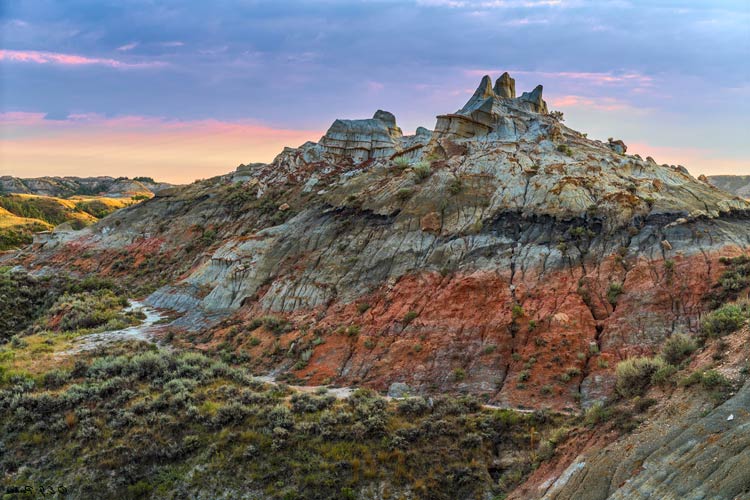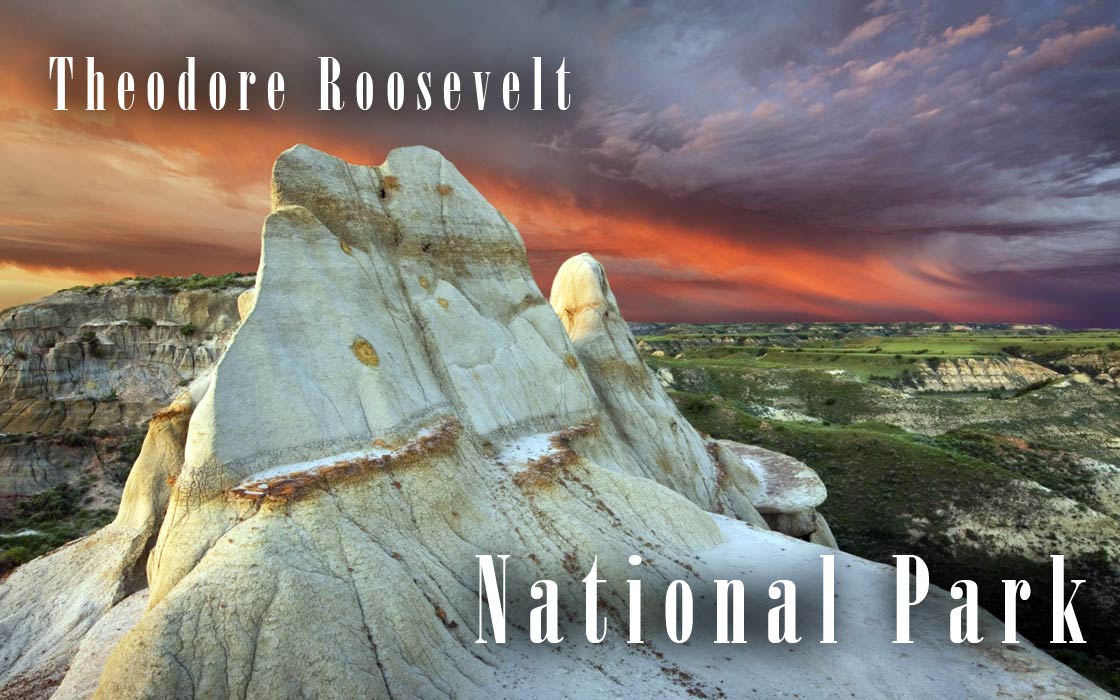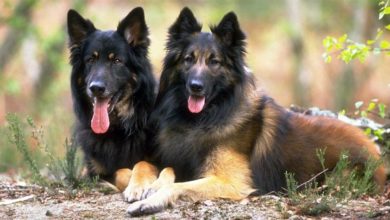Discovering the Wild West: A Journey Through Theodore Roosevelt National Park
Theodore Roosevelt National Park is a remarkable Badlands landscape that is teeming with fascinating geological features and abundant wildlife. The park’s unique rock formations, characterized by their distinctive erosion patterns, provide a glimpse into the area’s ancient geological history, revealing evidence of past marine environments and extinct species. The park is home to a variety of wildlife, including a large herd of American bison, bighorn sheep, pronghorn antelope, elk, and mule deer. Visitors to the park can explore its scenic drives, hiking trails, and historic sites, and enjoy some of the best stargazing opportunities in the country. Theodore Roosevelt National Park is a stunning natural wonder that is both captivating and awe-inspiring.
Theodore Roosevelt National Park is located in western North Dakota and consists of three distinct units spanning over 70,000 acres (over 285 km2) of Badlands terrain, offering unique scenic vistas, abundant wildlife and outdoor recreation opportunities. Visitors can hike, camp, horseback ride, and drive through the park to take in its striking landscapes, including rolling prairies, colorful rock formations, and deep canyons. Bison, pronghorns, bighorn sheep, and elk are just a few of the species that call the park home. A visit to the park provides a chance to experience the rugged beauty and natural diversity that inspired President Theodore Roosevelt to become a lifelong conservationist.
Location
The Theodore Roosevelt National Park is located in western North Dakota, USA.

Basic Facts About Theodore Roosevelt National Park
- Location: North Dakota, United States
- Established: 1978
- Size: 70,446 acres (28,508 hectares)
- Number of visitors: 552,117 (in 2020)
- Named after: Theodore Roosevelt, the 26th President of the United States
- Main features:
- Badlands landscapes
- wildlife (including a herd of American bison)
- historic sites
- scenic drives
- hiking trails
- stargazing opportunities
- Climate: Semi-arid with hot summers and cold winters
- Geology: Layers of sedimentary rock formations, including sandstone, mudstone, and siltstone, shaped by erosion over millions of years
- Flora: Mixed-grass prairie, badlands juniper woodlands, and riparian areas with cottonwood and willow trees
- Fauna: American bison, bighorn sheep, pronghorn antelope, elk, mule deer, coyotes, badgers, and numerous species of birds and reptiles
History and name of the Park
The Theodore Roosevelt National Park is named after President Theodore Roosevelt, who was a conservationist and played a significant role in preserving American wilderness. The park was established in 1978 and encompasses over 70,000 acres of Badlands terrain in western North Dakota. The area was originally protected as a national monument in 1947 and was later designated as a national park to honor Roosevelt’s contributions to the conservation movement. The park’s unique landscape, diverse wildlife, and rich history make it a popular destination for outdoor enthusiasts and history buffs alike.

Geography
The Theodore Roosevelt National Park is located in the Badlands region of western North Dakota and spans over 70,000 acres. The park consists of three distinct units: the North Unit, South Unit, and Elkhorn Ranch Unit. The terrain is characterized by rolling prairies, colorful rock formations, and deep canyons, with a mix of rugged and gently rolling hills. The Little Missouri River runs through the park, providing important habitat for wildlife. The park’s unique geology and varied topography make it a unique and scenic destination for outdoor enthusiasts.
Visitors can take in scenic vistas from overlooks and hike through the rugged terrain, where they may see bison, pronghorns, bighorn sheep, and elk, among other wildlife species. The Little Missouri River runs through the park, providing important habitat for wildlife and a serene setting for visitors. The park’s diverse landscapes, including rolling hills, deep canyons, and towering buttes, make it a popular destination for outdoor enthusiasts and photographers.

Geology
The Theodore Roosevelt National Park is located in the Badlands region and has a unique geology characterized by layered rock formations and erosional features. The rock formations in the park consist of ancient sedimentary rocks, including shale, sandstone, and siltstone, that have been carved and shaped by wind and water over millions of years. This process has created the park’s distinctive landscapes, including steep canyons, deep gullies, and towering buttes. The colorful rock formations, created by the oxidation of iron and manganese minerals, add to the park’s stunning visual appeal. The geology of the park provides important information about the area’s past and continues to shape its landscapes today.
Features of the park
The Theodore Roosevelt National Park is known for its unique and varied landscapes, abundant wildlife, and outdoor recreational opportunities. Some of the park’s notable features include:
- Rugged Badlands terrain
The park’s terrain includes rolling prairies, colorful rock formations, and deep canyons, offering unique scenic vistas for visitors. - Wildlife
Bison, pronghorns, bighorn sheep, and elk are just a few of the species that call the park home. Wildlife viewing is a popular activity in the park. - Hiking
The park offers numerous hiking trails, ranging from short nature walks to longer backcountry excursions, providing opportunities for visitors to experience the park’s rugged landscapes. - Scenic drives
Visitors can drive through the park and take in its stunning vistas from scenic overlooks along the way. - Camping
The park offers several campgrounds for visitors to experience the park’s beauty overnight. - River activities
The Little Missouri River runs through the park and provides opportunities for fishing, canoeing, and kayaking. - Historical sites
The park includes several historical sites, including the Elkhorn Ranch Unit, where President Theodore Roosevelt once lived and ranched.
These are just a few of the many features that make the Theodore Roosevelt National Park a popular destination for outdoor enthusiasts and history buffs alike.

Climate
The climate of Theodore Roosevelt National Park is characterized by wide temperature variations and low humidity. Summer temperatures in the park can reach up to 32-37°C (90-100°F), while winter temperatures can fall well below freezing, down to -18°C (0°F) or below. The park experiences moderate precipitation throughout the year, with the majority of it falling as snow in the winter. The park is located in a semi-arid region, making for a generally dry climate. Visitors should be prepared for rapidly changing weather conditions and bring appropriate clothing and gear for their activities, including warm clothing for cold temperatures and protective gear for hot and sunny weather.
Flora in Theodore Roosevelt National Park
The Theodore Roosevelt National Park is home to a diverse array of plant life, including prairie grasses, wildflowers, and deciduous and coniferous trees. Some of the notable plant species found in the park include:
- Prairie grasses
Grasses like little bluestem and needlegrass are common in the park’s prairies and provide important habitat for wildlife. - Wildflowers
The park is home to a variety of wildflowers, including prairie coneflowers, wild roses, and cacti, which bloom in the summer months. - Deciduous trees
Cottonwoods, elms, and ash trees are found along the banks of the Little Missouri River and in other riparian areas in the park. - Coniferous trees
Ponderosa pines, spruces, and firs are found in the park’s higher elevations and provide important habitat for wildlife.
These are just a few of the many plant species found in the Theodore Roosevelt National Park. The park’s diverse plant life provides important habitat for wildlife and helps to create the park’s unique and scenic landscapes.

Fauna in Theodore Roosevelt National Park
The Theodore Roosevelt National Park is home to a diverse array of wildlife, including mammals, birds, reptiles, and amphibians. Some of the notable wildlife species found in the park include:
- Bison
One of the park’s most iconic species, bison are commonly seen roaming the park’s prairies. - Pronghorn: These fast runners are a common sight in the park and can often be seen grazing on the prairies.
- Bighorn sheep
These elusive and majestic animals are found in the park’s rocky terrain and are a popular target for wildlife watchers. - Elk
These majestic animals are found in the park’s more remote areas and are a popular target for wildlife watchers. - Birds
The park is home to over 200 bird species, including bald eagles, hawks, and ospreys, making it a popular destination for birdwatchers. - Reptiles
Snakes and lizards, including rattlesnakes, bull snakes, and garter snakes, are found in the park. - Amphibians
Frogs, toads, and salamanders are also found in the park and play important roles in the park’s ecosystems.
These are just a few of the many wildlife species found in the Theodore Roosevelt National Park. The park’s diverse wildlife populations provide important habitat for these species and make the park a popular destination for wildlife watchers and outdoor enthusiasts.

Tourism and tourist main attractions in the park
The Theodore Roosevelt National Park is a popular tourist destination, attracting visitors from around the world to experience its unique landscapes, abundant wildlife, and outdoor recreational opportunities. Some of the park’s most popular tourist attractions include:
- Scenic drives
Visitors can drive through the park and take in its stunning vistas from scenic overlooks along the way. - Hiking
The park offers numerous hiking trails, ranging from short nature walks to longer backcountry excursions, providing opportunities for visitors to experience the park’s rugged landscapes. - Wildlife viewing
Bison, pronghorns, bighorn sheep, and elk are just a few of the species that call the park home, making it a popular destination for wildlife watchers. - Camping
The park offers several campgrounds for visitors to experience the park’s beauty overnight. - River activities
The Little Missouri River runs through the park and provides opportunities for fishing, canoeing, and kayaking. - Historical sites
The park includes several historical sites, including the Elkhorn Ranch Unit, where President Theodore Roosevelt once lived and ranched. - Scenic vistas
The park’s varied landscapes, including its rugged Badlands terrain, colorful rock formations, and deep canyons, offer unique scenic vistas for visitors.
These are just a few of the many attractions that make the Theodore Roosevelt National Park a popular destination for tourists, outdoor enthusiasts, and history buffs alike.

The South Unit of Theodore Roosevelt National Park
The South Unit of Theodore Roosevelt National Park is located in Billings County, North Dakota and is one of two units that make up the park. It features the 36-mile long Loop Road offers visitors stunning views of the park’s rugged Badlands terrain and abundant wildlife.
The North Unit of Theodore Roosevelt National Park
The North Unit of Theodore Roosevelt National Park is located in McKenzie County, North Dakota and is one of two units that make up the park. It features the 14-mile long Scenic Drive offers visitors stunning views of the park’s rugged Badlands terrain and abundant wildlife.

„Prairie Dog Town”
Prairie Dog Town is a popular attraction within Theodore Roosevelt National Park. It is a protected area where visitors can observe a thriving colony of black-tailed prairie dogs. Prairie dogs are a keystone species in the park’s ecosystem and play an important role in supporting a diverse array of other wildlife, including birds, reptiles, and small mammals.
Visitors to Prairie Dog Town can watch the prairie dogs as they go about their daily activities, such as burrowing, socializing, and warning each other of danger. The prairie dogs’ active behavior and chirping calls make them a popular attraction for families and wildlife enthusiasts.
In addition to observing the prairie dogs, visitors to Prairie Dog Town can learn about the ecology and conservation of this important species through educational signs and ranger-led programs. Overall, Prairie Dog Town is a unique and fascinating feature of Theodore Roosevelt National Park that provides visitors with a unique opportunity to experience the park’s wildlife and ecosystems up close.
„North Dakota Badlands”
The North Dakota Badlands is a region of rugged terrain and colorful rock formations that covers portions of western North Dakota. It is located within Theodore Roosevelt National Park and is one of the park’s most distinctive features. The Badlands are known for their unique landscapes, including deep canyons, steep ridges, and towering buttes, which are the result of millions of years of erosion.
The North Dakota Badlands are home to a diverse array of wildlife, including bison, pronghorns, bighorn sheep, elk, and many other species. It is also home to many rare and threatened species, including the swift fox and the threatened Dakota skipper butterfly.
Visitors to the North Dakota Badlands can experience the rugged beauty of the region through scenic drives, hiking trails, and wildlife watching opportunities. The park’s scenic drives provide visitors with stunning views of the Badlands, while the park’s hiking trails provide opportunities to explore the Badlands up close. Wildlife watching is also a popular activity, with bison, pronghorns, and other species often visible from the park’s roads and trails.
Overall, the North Dakota Badlands are a unique and captivating part of Theodore Roosevelt National Park that offer visitors a glimpse into the rugged beauty and biodiversity of the region.

„Buck Hill”
Buck Hill is a feature within Theodore Roosevelt National Park in North Dakota. It is a small hill located in the park’s South Unit, which rises above the surrounding prairies and provides visitors with panoramic views of the park’s rolling grasslands and distant Badlands.
Buck Hill is a popular destination for visitors to the park, who come to hike the short trail to the top of the hill and enjoy the scenic vistas from its summit. From the top of Buck Hill, visitors can see for miles in all directions, taking in the beauty of the park’s prairies, Badlands, and distant horizons.
In addition to its scenic views, Buck Hill is also home to a diverse array of wildlife, including pronghorns, bison, and many bird species. Visitors to Buck Hill may be able to see some of these species as they explore the area.
Overall, Buck Hill is a unique and scenic feature within Theodore Roosevelt National Park that offers visitors a chance to experience the beauty of the park’s prairies and Badlands from a different perspective.
„Beef Corral Bottom”
Beef Corral Bottom is an area within Theodore Roosevelt National Park in North Dakota. It is located in the park’s South Unit and is a popular destination for visitors who are interested in experiencing the park’s prairies and wildlife.
Beef Corral Bottom is known for its large, grassy meadows and rolling hills, which provide a habitat for a diverse array of wildlife, including pronghorns, bison, and many bird species. Visitors to Beef Corral Bottom may be able to see some of these species as they explore the area.
The area is also home to a historic beef corral, which was used to corral cattle in the late 1800s and early 1900s. Today, the corral is a reminder of the area’s historical significance and provides visitors with a glimpse into the park’s past.
Visitors to Beef Corral Bottom can hike or drive through the area, taking in the scenic views of the prairies and distant horizons. The area is also popular for wildlife watching, as many species are often visible from the park’s roads and trails.
Overall, Beef Corral Bottom is a unique and scenic part of Theodore Roosevelt National Park that offers visitors a chance to experience the beauty of the park’s prairies and wildlife up close.

„Scenic Drive”
The Scenic Drive is a popular road within Theodore Roosevelt National Park in North Dakota. The drive winds through the park’s South Unit, providing visitors with a chance to experience the park’s diverse landscapes, including rolling prairies, colorful rock formations, and scenic vistas.
The Scenic Drive is approximately 36 miles long and provides visitors with a self-guided tour of the park’s South Unit. The drive is accessible by car and provides opportunities for wildlife viewing, hiking, and scenic overlooks.
Along the way, visitors can stop at overlooks to take in the views of the park’s prairies, Badlands, and distant horizons. They can also hike trails that lead to scenic overlooks and visit the park’s visitor center, where they can learn more about the park’s history and wildlife.
The Scenic Drive is a popular activity for visitors to Theodore Roosevelt National Park, providing them with a chance to experience the park’s beauty and wildlife in a leisurely and accessible way. Whether driving or hiking, visitors to the park can take in the stunning scenery and natural wonders of the South Unit and discover why Theodore Roosevelt National Park is considered one of North Dakota’s most prized treasures.
„Oxbow Overlook”
Oxbow Overlook is a scenic viewpoint within Theodore Roosevelt National Park in North Dakota. It is located in the park’s South Unit and provides visitors with panoramic views of the park’s prairies and Badlands.
Oxbow Overlook is named after the nearby oxbow bend in the Little Missouri River, which can be seen from the overlook. The oxbow bend is a unique and distinctive feature of the park’s landscape, formed by the slow meandering of the river over time.
From the Oxbow Overlook, visitors can take in breathtaking views of the park’s prairies, Badlands, and distant horizons. The overlook provides a great place to relax and take in the beauty of the park, and is also a popular destination for wildlife watching, as many species can often be seen from the overlook.
The Oxbow Overlook is accessible by car and is a popular destination for visitors to Theodore Roosevelt National Park. Whether for its scenic views or its wildlife watching opportunities, Oxbow Overlook is a must-visit destination for anyone exploring the park’s South Unit.

„Loghhorn Pullout”
Longhorn Pullout is a scenic viewpoint within Theodore Roosevelt National Park in North Dakota. It is located in the park’s South Unit and provides visitors with an opportunity to experience the park’s prairies and Badlands.
Longhorn Pullout is named after a nearby herd of Texas Longhorn cattle, which can sometimes be seen from the pullout. The pullout provides visitors with an opportunity to get up close and personal with the park’s prairies, which are home to a diverse array of wildlife, including bison, pronghorns, and many bird species.
From Longhorn Pullout, visitors can take in the views of the park’s prairies, Badlands, and distant horizons. The pullout is also a popular destination for wildlife watching, as many species can often be seen from the pullout, including the Texas Longhorns.
Longhorn Pullout is accessible by car and is a popular destination for visitors to Theodore Roosevelt National Park. Whether for its scenic views or its wildlife watching opportunities, Longhorn Pullout is a must-visit destination for anyone exploring the park’s South Unit.
„Slump Block”
Slump Block is a unique rock formation within Theodore Roosevelt National Park in North Dakota. It is located in the park’s South Unit and is a popular destination for visitors due to its unique and distinctive appearance.
Slump Block is named after its appearance, which resembles a large block of rock that has slumped or slid down a hill. The formation is made up of rock layers that have been bent and broken, creating a dramatic and eye-catching feature in the park’s Badlands landscape.
Visitors can view Slump Block from a nearby overlook and can hike trails that lead to the formation. The trails offer visitors the opportunity to get up close and personal with the park’s Badlands, including Slump Block and other unique rock formations.
Slump Block is a popular destination for visitors to Theodore Roosevelt National Park, offering them a chance to experience the park’s unique and diverse landscape. Whether viewed from an overlook or explored up close on a hike, Slump Block is a must-visit destination for anyone exploring the park’s South Unit.

„Cannonball Contretion”
Cannonball Concretion is a unique rock formation within Theodore Roosevelt National Park in North Dakota. It is located in the park’s South Unit and is a popular destination for visitors due to its unique and distinctive appearance.
Cannonball Concretion is named after its appearance, which resembles a large cannonball. The formation is created by the buildup of minerals, such as iron and siderite, around a nucleus, such as a fossil or a piece of organic material. Over time, the concretion has become harder than the surrounding rock, creating a distinct and eye-catching feature in the park’s Badlands landscape.
Visitors can view Cannonball Concretion from a nearby overlook and can hike trails that lead to the formation. The trails offer visitors the opportunity to get up close and personal with the park’s Badlands, including Cannonball Concretion and other unique rock formations.
Cannonball Concretion is a popular destination for visitors to Theodore Roosevelt National Park, offering them a chance to experience the park’s unique and diverse landscape. Whether viewed from an overlook or explored up close on a hike, Cannonball Concretion is a must-visit destination for anyone exploring the park’s South Unit.

How To Reach To Theodore Roosevelt National Park?
Theodore Roosevelt National Park can be accessed by car or by air. Here are some ways to reach the park:
- By car
The park is located in western North Dakota, about 2 hours west of Bismarck and 5 hours east of Billings, Montana. The park can be reached via Interstate 94 or US Highway 85. There are also several scenic drives within the park that offer access to different parts of the park. - By air
The nearest major airport is Bismarck Municipal Airport (BIS), which is about 2 hours east of the park. Other nearby airports include Dickinson Theodore Roosevelt Regional Airport (DIK) and Williston Basin International Airport (XWA). Rental cars are available at all of these airports.
Best Time To Visit Theodore Roosevelt National Park
The best time to visit Theodore Roosevelt National Park depends on your interests and preferences. Here are some factors to consider:
- Weather
The park is open year-round, but the weather can vary greatly by season. Summer (June to August) is the most popular time to visit because the weather is warm and dry, but temperatures can reach up to 90°F (32°C) during the day. Spring (April to May) and fall (September to October) offer cooler temperatures, but there is a higher chance of rain and snow. Winter (November to March) can be very cold, with temperatures sometimes dropping below 0°F (-18°C). - Wildlife
The park’s wildlife is most active in the early morning and late afternoon, so if you want to see bison, elk, or other animals, plan to visit during those times. - Crowds
The park is less crowded in the spring and fall, which may be a better option if you prefer a quieter experience. Summer is the busiest season, and the park can get crowded, especially on weekends and holidays.
The best time to visit Theodore Roosevelt National Park is during the spring or fall, when the weather is cooler and the crowds are smaller. However, if you want to experience the park’s warm weather and see its wildlife in action, summer can also be a great time to visit.

Conservation
Conservation is an important part of Theodore Roosevelt National Park’s mission. The park works to protect and preserve the natural and cultural resources within its boundaries. Here are some examples of the park’s conservation efforts:
- Bison restoration
Bison were nearly hunted to extinction in the late 1800s, but the park has played a key role in restoring the species. The park’s bison herd is now one of the largest publicly owned herds in the world. - Habitat restoration
The park works to restore habitats that have been damaged by human activity or natural disasters. This includes planting native grasses and removing invasive species. - Dark sky preservation
The park has been designated an International Dark Sky Park, which means it works to protect the nighttime environment and reduce light pollution. - Cultural resource preservation
The park protects historic structures and artifacts, including the Maltese Cross Cabin, which was Theodore Roosevelt’s first ranch house in the Dakota Territory.
Theodore Roosevelt National Park is committed to preserving its natural and cultural resources for future generations to enjoy.

Interesting facts about Theodore Roosevelt National Park
- Named after the 26th US President
Theodore Roosevelt National Park is named after former US President Theodore Roosevelt, who was a passionate conservationist and helped establish the national park system. - Bison and other wildlife
The park is home to a herd of American bison, as well as other wildlife such as elk, pronghorn antelope, bighorn sheep, and mule deer. - Badlands
The park’s North and South Units both feature Badlands landscapes, which are characterized by their unique rock formations and erosion patterns. - Fossils
Fossils of ancient sea creatures, including ammonites and gastropods, can be found within the park. - Roosevelt’s cabin
Roosevelt’s cabin, known as the Elkhorn Ranch, can be found in the park. The cabin was Roosevelt’s home in the Dakotas and is now a historical site. - Scenic drives
The park features several scenic drives, including the Painted Canyon Scenic Byway, which offers breathtaking views of the park’s Badlands landscape. - Hiking trails
The park offers a variety of hiking trails, ranging from short, easy walks to longer, more challenging hikes. - Dark sky park
Theodore Roosevelt National Park is certified as an International Dark Sky Park, meaning that the park offers some of the best stargazing opportunities in the country. - Petroleum reserves
The park sits atop vast petroleum reserves, including the Bakken Formation, which is one of the largest oil reserves in the world. - National park status
Theodore Roosevelt National Park was established as a national park in 1978, becoming the first national park in North Dakota.

Q&A (questions and answers) about Theodore Roosevelt National Park
Q: Where is Theodore Roosevelt National Park located?
A: Theodore Roosevelt National Park is located in North Dakota, United States.
Q: Who is the park named after?
A: Theodore Roosevelt National Park is named after former US President Theodore Roosevelt.
Q: What type of landscape can be found in the park?
A: The park features Badlands landscapes, characterized by their unique rock formations and erosion patterns.
Q: What type of wildlife can be found in Theodore Roosevelt National Park?
A: The park is home to a herd of American bison, as well as other wildlife such as elk, pronghorn antelope, bighorn sheep, and mule deer.
Q: What historic sites can be found in the park?
A: Roosevelt’s cabin, known as the Elkhorn Ranch, can be found in the park.
Q: What scenic drives can be found in the park?
A: The park features several scenic drives, including the Painted Canyon Scenic Byway.
Q: What types of hiking trails can be found in the park?
A: The park offers a variety of hiking trails, ranging from short, easy walks to longer, more challenging hikes.
Q: Is Theodore Roosevelt National Park a dark sky park?
A: Yes, Theodore Roosevelt National Park is certified as an International Dark Sky Park, meaning that the park offers some of the best stargazing opportunities in the country.
Q: What are some of the geological features in Theodore Roosevelt National Park?
A: Fossils of ancient sea creatures, including ammonites and gastropods, can be found within the park.
Q: When was Theodore Roosevelt National Park established as a national park?
A: Theodore Roosevelt National Park was established as a national park in 1978, becoming the first national park in North Dakota.



















